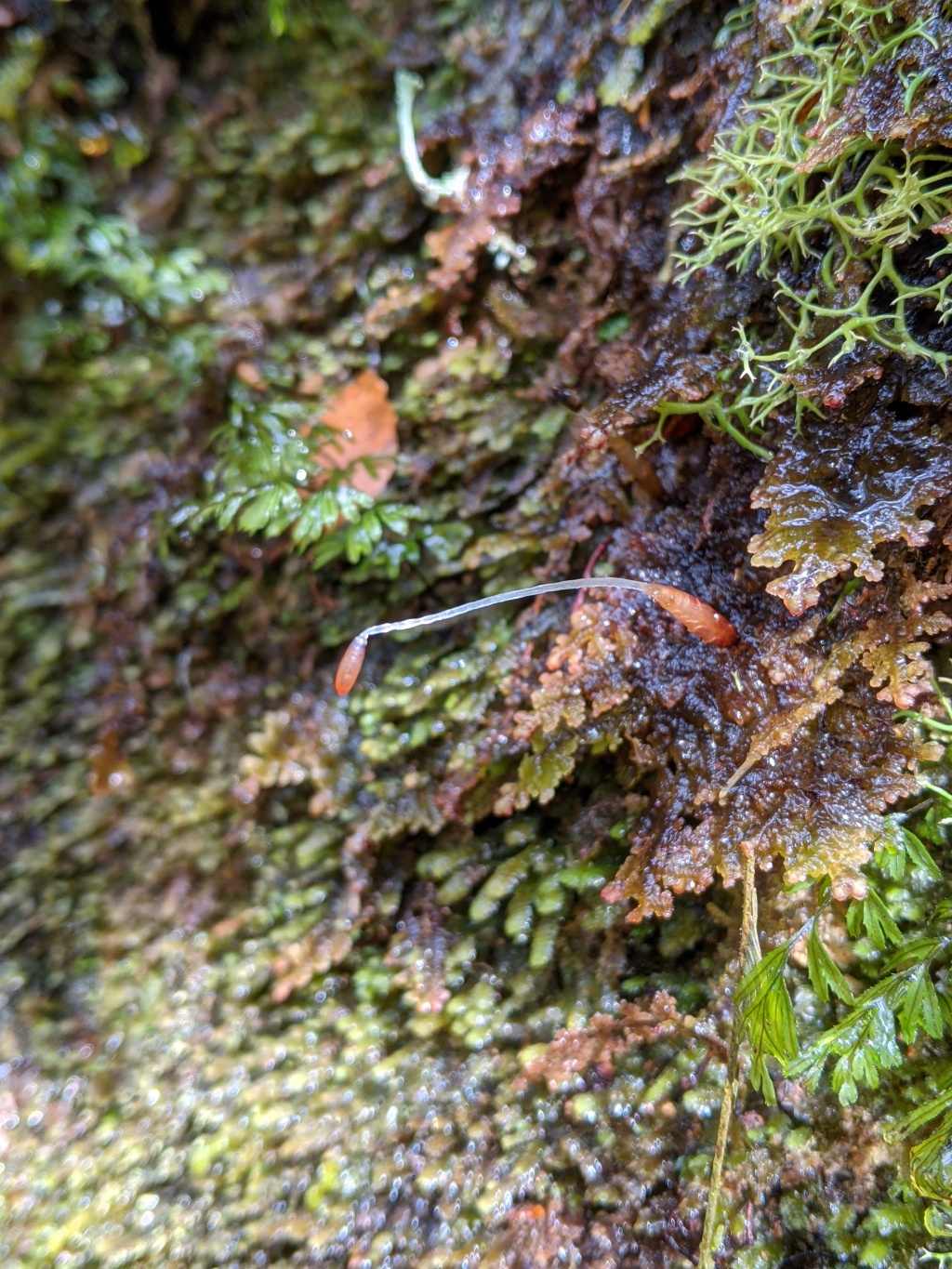Gackstroemia weindorferi
(Herzog) GrolleEpiphytic, rarely lithophytic or terrestrial, ferrugineous or coppery, yellow-green near growing points, dioicous. Stem ascending or erect, regularly 2–3-pinnate; branches coplanar, diverging at a wide angle to stem. Lateral leaves transitioning in form from primary stem to tertiary branches; main lobes on stem leaves asymmetrically orbicular-ovate to broadly ovate, 1000–1425 µm long, 750–1250 µm wide, excluding cilia, spreading horizontally from stem, weakly convex when viewed from above, imbricate, dentate-ciliate, with cilia to 200 µm long, with a plane or slightly decurved acute or apiculate apex, becoming smaller and more ciliate on branches, to 500 µm long and 375 µm wide, with cilia to 250 µm long on ultimate branches; lobules on stem leaves oblong, 250–550 µm long excluding cilia, nearly always explanate, sulcate from reflexed margins, rarely some forming a water sac, entire or with a cilia to 325 µm long at the apex and sometimes also a few cilia along margins, becoming consistently narrowly clavate, saccate, 175–225 µm long, with a lateral slit and apical cilium to 325 µm long on leaves of ultimate branches; stylus present on leaves of stem, elliptic to ovate to suborbicular or suboblate, wider than lobule, 250–550 µm long, 200–425 µm wide, excluding cilia, cucullate, entire or with up to a few cilia, absent from leaves of branches. Underleaves transitioning in form from stem to ultimate branches; underleaves on stem ovate-oblate to subreniform in outline, with 2 lobes 0.2–0.4 of the total underleaf length, 700–1200 µm long, 800–1425 µm wide, imbricate, with revolute margins, entire or with spinose teeth or cilia; underleaves on primary branches similar in outline and division to those of primary stem but with margins becoming plane and entire to dentate, 375–775 µm long, 500–925 µm wide, with cilia to 325 µm long; underleaves of ultimate branches usually uniformly composed of two narrowly clavate water sacs fused only at base, or sporadically some composed of a single explanate lobe and a water sac lobe, 175–225 µm long, entire or each lobe with a single cilium to 175 µm long. Leaf cells circular or elliptic, 15–40 µm diam., becoming oblong and longer, to 53 µm long and 25 µm wide toward base, smooth, thin-walled, with large prominent trigones. Rhizoids in fascicles at base of underleaves on primary stem. Androecia on secondary and tertiary branches, with 3–4 (–5) pairs of leaf-like bracts. Coelocaule erect, fleshy, narrowly cylindric-clavate, covered by imbricate bracts and bracteoles, without paraphyllia, 7–10.5 mm long, 1–2 mm wide, including bracts. Bracts covering coelocaule narrowly ovate, with two acute lobes to 0.2 of the bract length, longest 3500–4250 µm long and 1750–2300 µm wide excluding cilia, membranous, with a dense fringe of cilia to 1450 µm long. Perianth present, cylindric, sometimes spit to base on ventral side, not or slightly exserted beyond bracts, fringed at margin with cilia. Seta to 23 mm long. Capsule cylindric, 2–3 mm long, 3–4-stratose. Spores reticulate to areolate, with low ridge-like vermiculae.
GGr, EGL, HSF, HNF, OtR, Strz, HFE, VAlp. Mostly in cool-temperate rainforest of Gippsland, the Yarra Ranges and the Otways, but also occasionally in wet sheltered sites among rock in the Grampians and the Alps. Also NSW, Tas and New Zealand.
 Spinning
Spinning